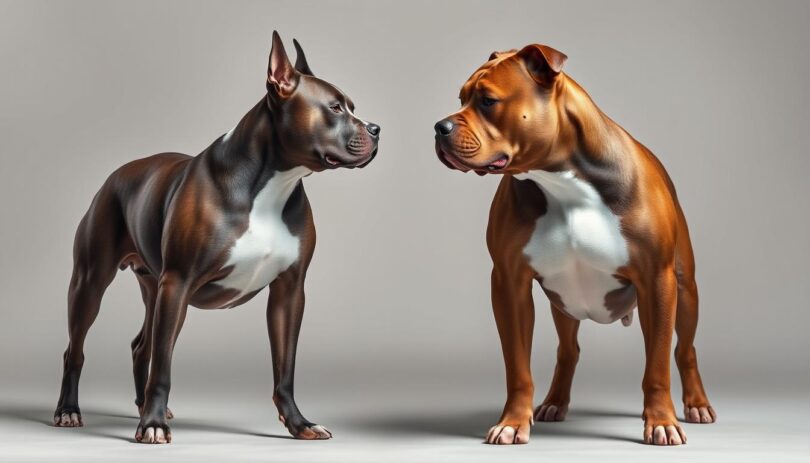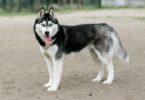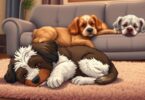Think of a faithful companion that lives on love but has a misconstrued image. This paradox is faced by many dog lovers when they are trying to look at breeds that are usually shadowed by the myths. This article is an unraveling of two great journeys of two great companions, their resilience, and what really makes them so different.
These dogs were originally developed to undertake difficult tasks, but they have evolved into loving family pets. Historical records show how early domestication reshaped their roles. By the 20th century, selective breeders have placed a premium on temperament rather than aggression, and their current personalities as friendly, people-loving pets are a result of this.
The visible differences are brought about by physical characteristics such as the structure of the muscles and the shape of the head. However, behavior hinges more on upbringing than genetics. Researchers point out that both breeds need to be trained regularly and socialized at an early age to become good therapy pets or fun pets in the household.
This guide discusses their origin, their care requirements, and how the attitude towards them changed and evolved to admiration. You will find out why judging dogs by their looks only skims the surface of their tales-and how knowledgeable ownership leads to happier, healthier connections with these extraordinary creatures.
Breed Histories and Origins
Tracing their origins will help us to see how purpose defined these dogs. The two lineages have their origins in 19th-century England when breeders crossed bulldogs with terriers to produce tenacious working-companion dogs.
American Pit Bull Terrier History
The dogs are the descendants of Old English Bulldogs and became popular after the Civil War. Farmers valued their strength for herding and guarding. Unfortunately, a few took advantage of their athleticism to fight in underground rings even though the Cruelty to Animals Act of 1835 in England had outlawed blood sports.
American Staffordshire Terrier Evolution
Breeder Joe Dunn reshaped their narrative in the 1930s. He stressed fidelity rather than ferocity and they were recognized by AKC in 1936 under a different name to dissociate them with the bad image. They are related to the smaller Staffordshire Bull Terrier, but were selectively bred to have different traits.
Modern roles highlight their adaptability. They were once bred to perform difficult tasks but today they are used as therapy dogs as well as guards in the home. Historical context can clear up the myths- they are not just what they were in the past.
Physical Traits and Visual Differences
The first differences, which can be observed between these breeds, are their physique. Although they both have muscular bodies that are the result of selective breeding, some important differences in proportions and structure make it easy to tell them apart at a glance.
Body Build and Size
One breed is generally taller, 17-21 inches at the shoulder with a leaner 30-60 lb frame. The other is shorter and more compact with 17-19 inches of height but with more muscle mass and weighs 40-70 lbs. These size variations are indicative of their historical purpose- one was bred to be agile, the other was bred to be powerful.
Males often display broader chests in both types. Females generally measure 1-2 inches shorter. The taller dogs are athletic in their profile, compared to stockier profiles of their counterparts, evident in the shoulder width and leg length.
Coat Colors and Markings
Both breeds sport short, glossy coats requiring minimal grooming. Color patterns reveal notable distinctions. One will tolerate almost any color but merle whereas the other is limited in breed standards to brindle or solid color with white markings.
Common markings include facial masks and chest patches. Some exhibit unique ticking or spots. The texture of the coat is the same in both types, but darker pigments can fade under sunlight in the course of time.
Temperament, Personality, and Training
Understanding canine companions requires looking beyond stereotypes. Both breeds are happy with structure and love and have personalities that are more influenced by how they are raised than their breed. Their intelligence shines through interactive play and problem-solving activities.
Family Behavior and Socialization
These dogs form strong bonds with their human families. Exposure to a variety of environments at early stages makes them adjust to children and other animals. Puppy classes and controlled introductions build confidence.
They can end up in destructive habits because of boredom unless engaged properly. Mental stimulation through puzzle toys complements physical activity. Consistency in routines reduces anxiety and reinforces trust.
Exercise, Training, and Care Needs
Their daily walks and playtime allow them to spend their energy in a positive way. Reward-based techniques are most effective- rewards and praise are faster than correction. Agility training strengthens both body and mind.
Socialization with unfamiliar dogs may need to be more specific with one breed. Leash manners and obedience commands ensure safe public interactions. Patience is the key that should be emphasized by the owners and the way to obtain progress is through repetition and positive experiences.
Meeting their needs creates harmonious households. An exhausted dog with well-established boundaries is a happy companion, willing to obey and defend his/her loved ones.
Comparing american staffordshire terrier vs pit bull: In-depth Analysis
To learn about these breeds, it is necessary to take a closer look at their common and distinctive features. Although they are frequently lumped together, there are subtle differences that define how they are cared and how they can fit into various lifestyles.
Similarities in Temperament and Loyalty
Both dogs form deep bonds with families. They are attentive companions because of their protective instincts and enthusiasm of playtime. Research indicates that when they are well socialized, behavioral problems are minimized and their loving natures can be displayed.
These animals thrive on structure. Reward-based training builds confidence and reduces issues such as territoriality. They are also fast learners when put to puzzles or agility activities due to their intelligence.
Distinctive Differences in Build and History
One breed is usually leaner in its structure, as it has been used historically in activities that require agility. The other’s stockier build stems from power-focused breeding. Such physical variations affect exercise requirements- athletic physiques might have high exercise requirements.
Breed naming also impacts perceptions. In 1930s, rebranding campaigns were undertaken to separate one type of people with stereotypes of the past. Responsible ownership today takes care of possible health issues such as hip dysplasia by means of regular vet visits and special nutrition.
Wrapping Up Your Breed Comparison
The decision on which of these faithful sidekicks to choose begins with knowing their journey. Their physical characteristics and personalities are defined by historical backgrounds but their position as a family pet is defined by modern care. Temperament is something that thrives on training and physical needs are dependent on the build- the most important considerations in choosing dog breeds.
Consider your home environment carefully. Energetic households may want active companions and more relaxed spaces may fit more relaxed personalities. Both breeds are fine with on going grooming including nail clipping and brushing. Their short fur needs to be taken care of once a week, yet does not shed excessively in your home life.
Both of them can thrive in warm families with regular schedules. Seek responsible breeders who prioritize health screenings. Start socialization early—puppy classes build confidence and manners. Pair exercise with mental challenges to nurture well-rounded pets.
Note: proper grooming and patient training turn out to be misunderstanding histories into heartwarming success stories. By pairing them to your lifestyle, you will have a happy home with either breed making an excellent partner. Knowledge turns good intentions into great partnerships.
FAQ
Which breed is larger: AmStaff or Pit Bull?
AmStaffs are usually stockier, reaching 1719 inches in height, whereas Pit Bulls are a little leaner and have a similar weight range. The two breeds need strong leashes because they have muscular bodies.
Are these dogs safe around children?
Both breeds are loyal and affectionate with the family when properly socialized. The initial training makes them play with children in a soft manner, but they should always be watched during the playtime.
Do they have high exercise requirements?
Yes. Daily walks, play sessions, and mental stimulation are crucial. These active dogs do best in active homes and can be destructive when not exercised enough.
How do their grooming needs compare?
Both have short, low-maintenance coats. Brushing the fur once a week helps to reduce shedding and bathing once in a while helps to maintain their fur clean. Both breeds need regular nail trimming and ear check.










Leave a Comment